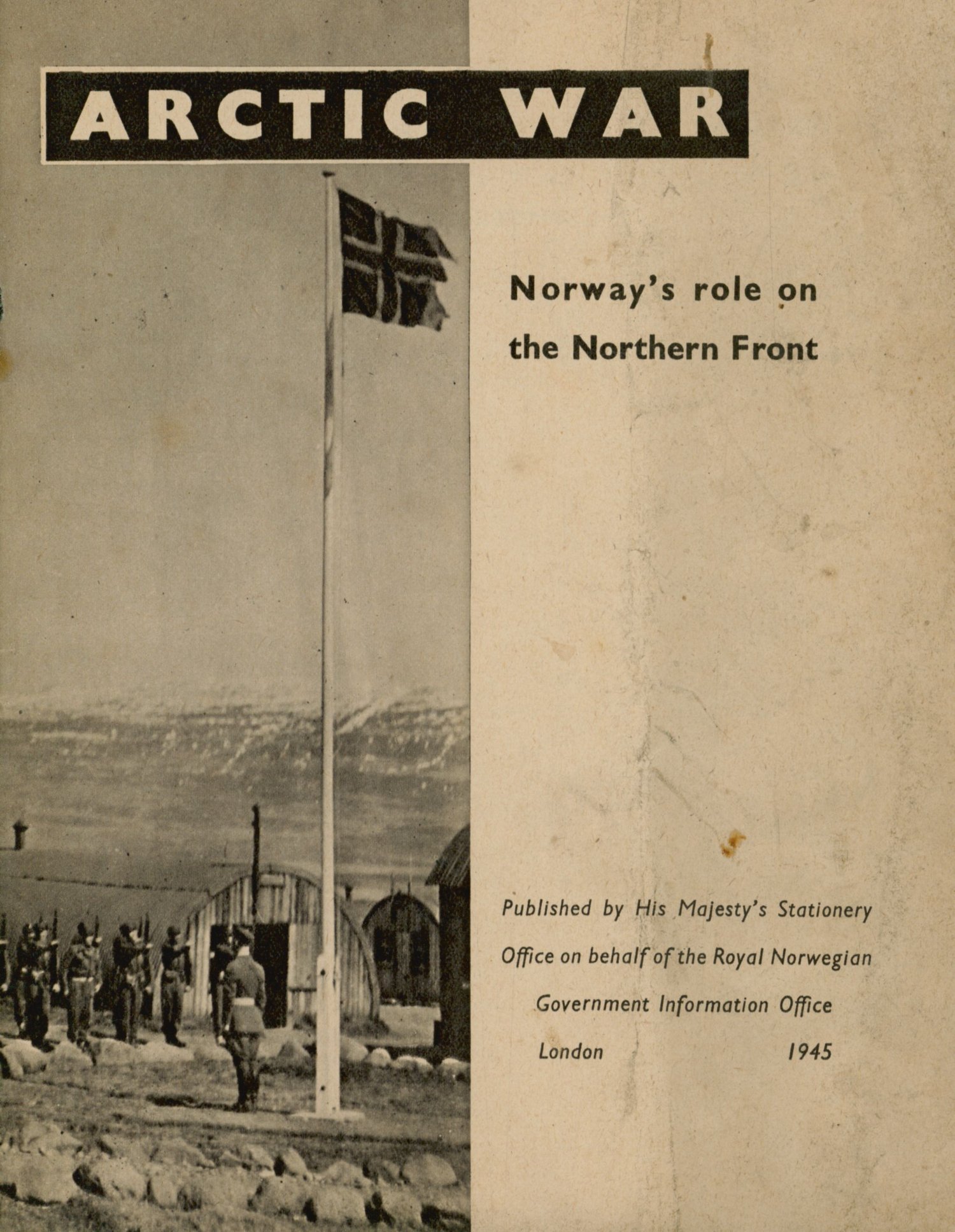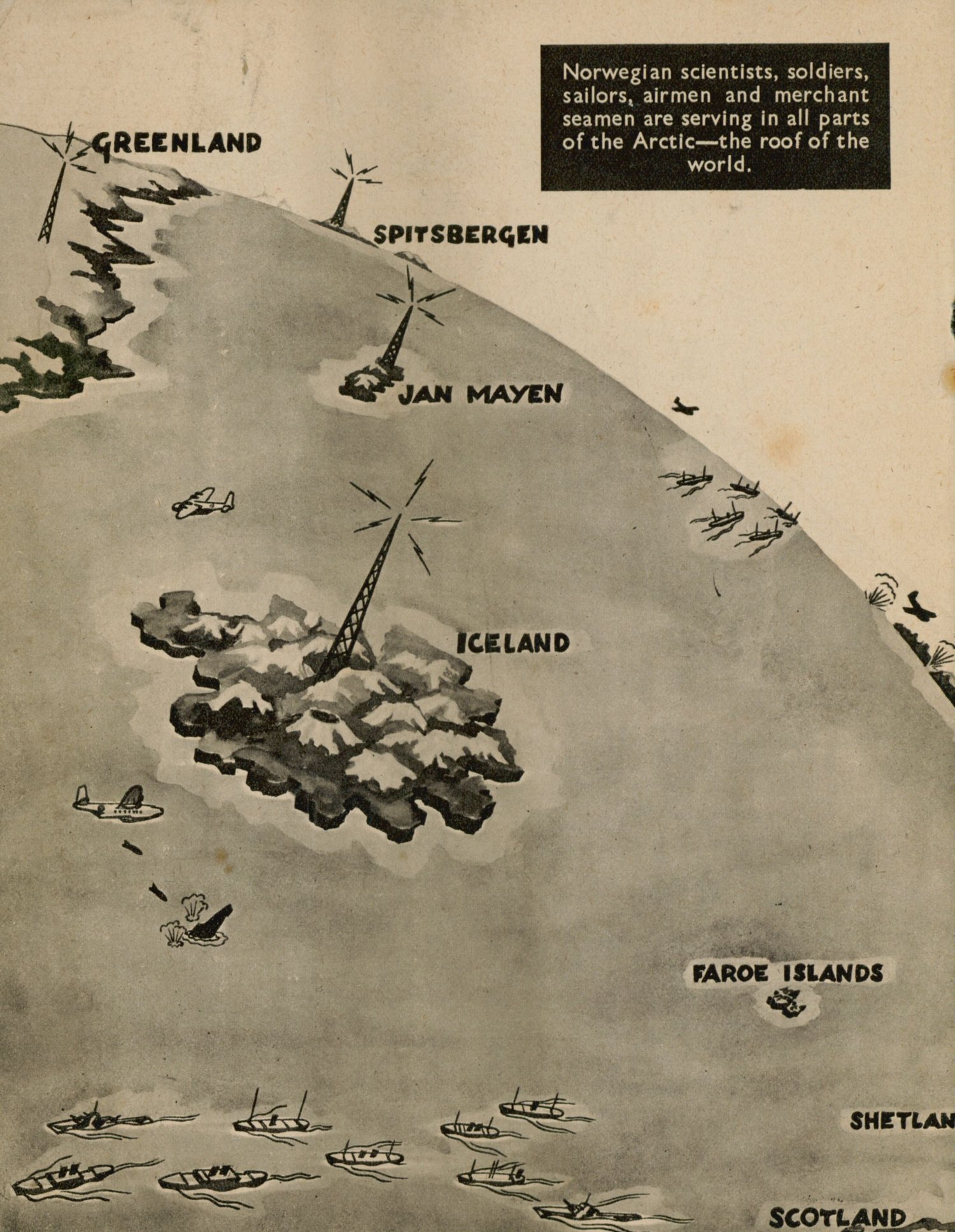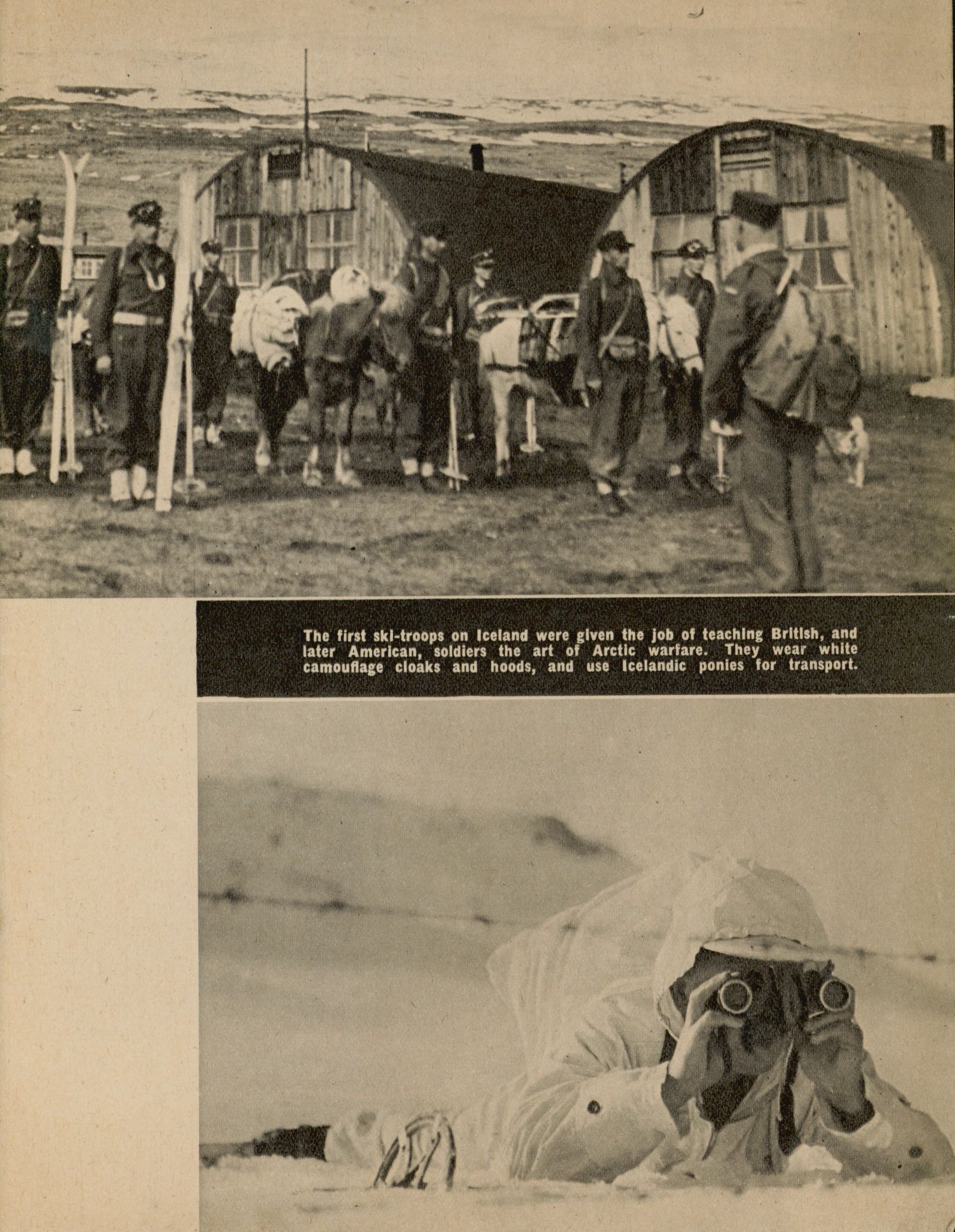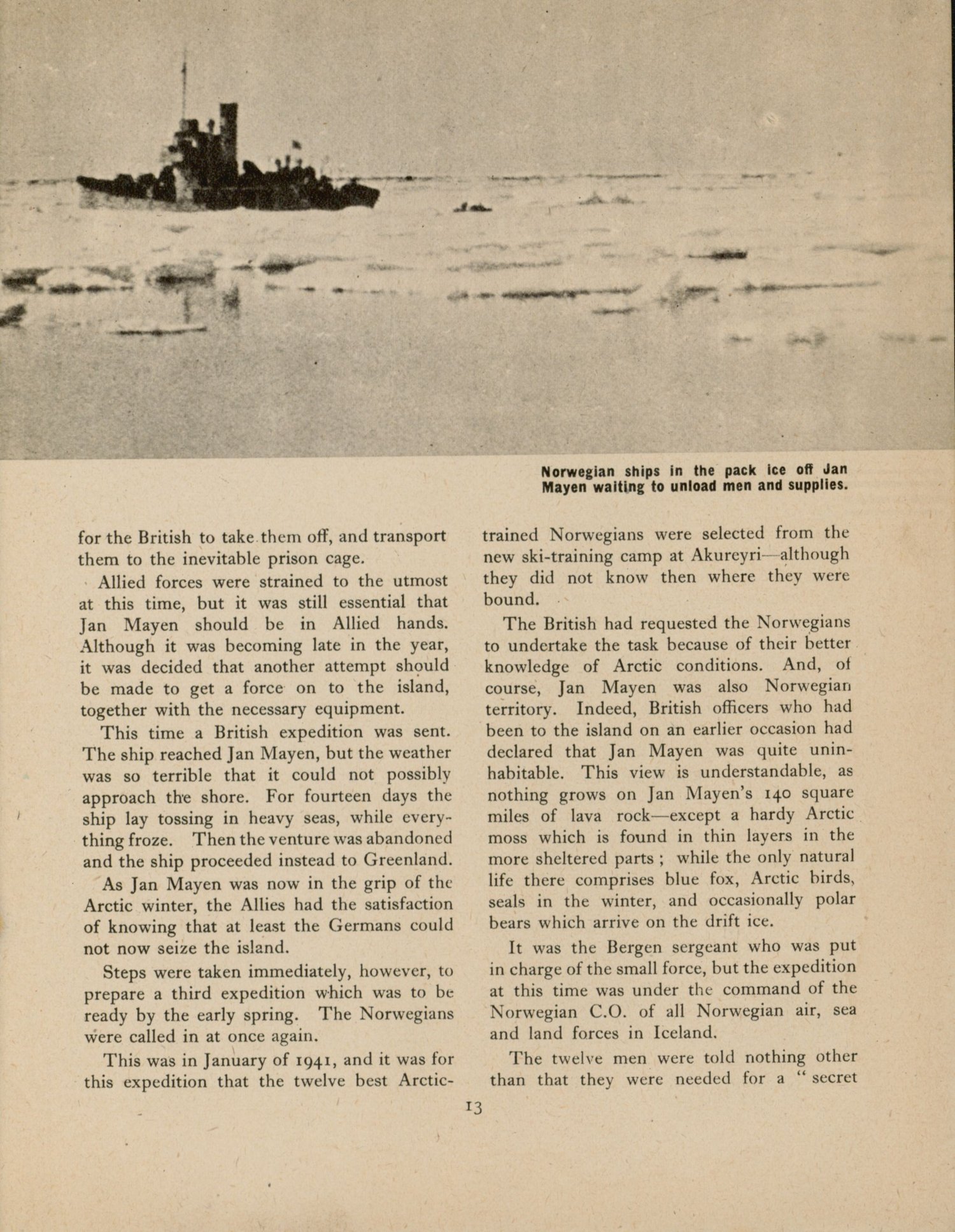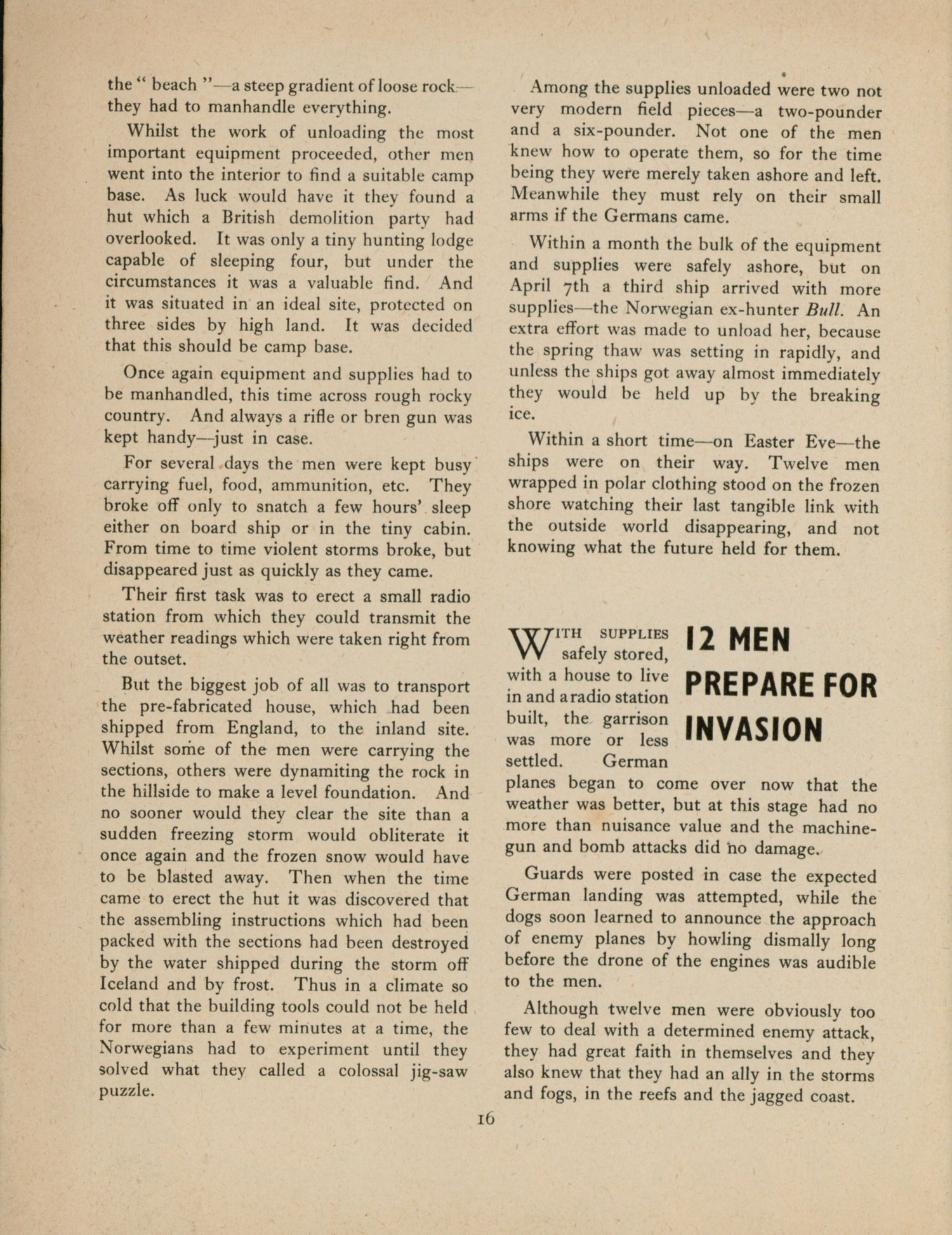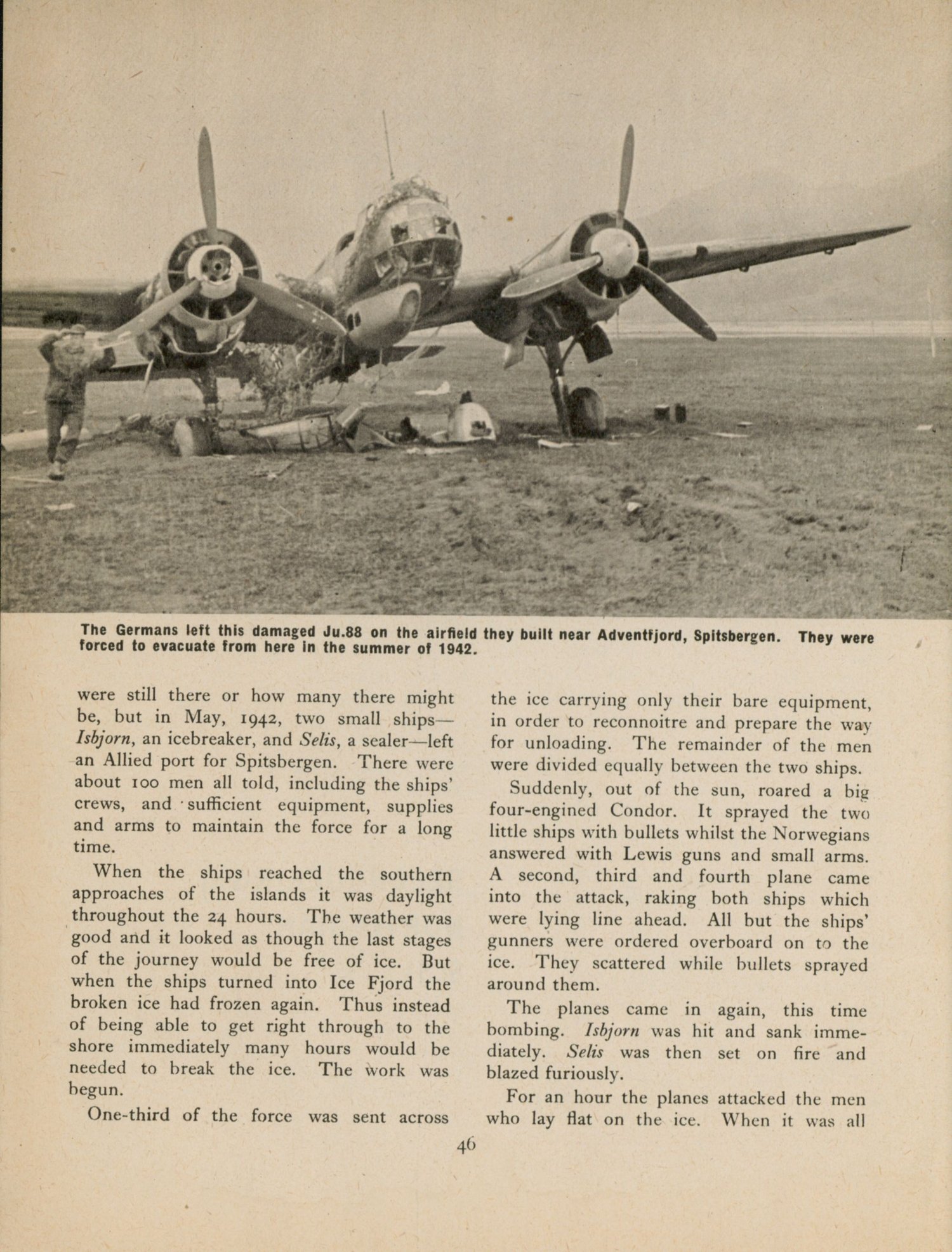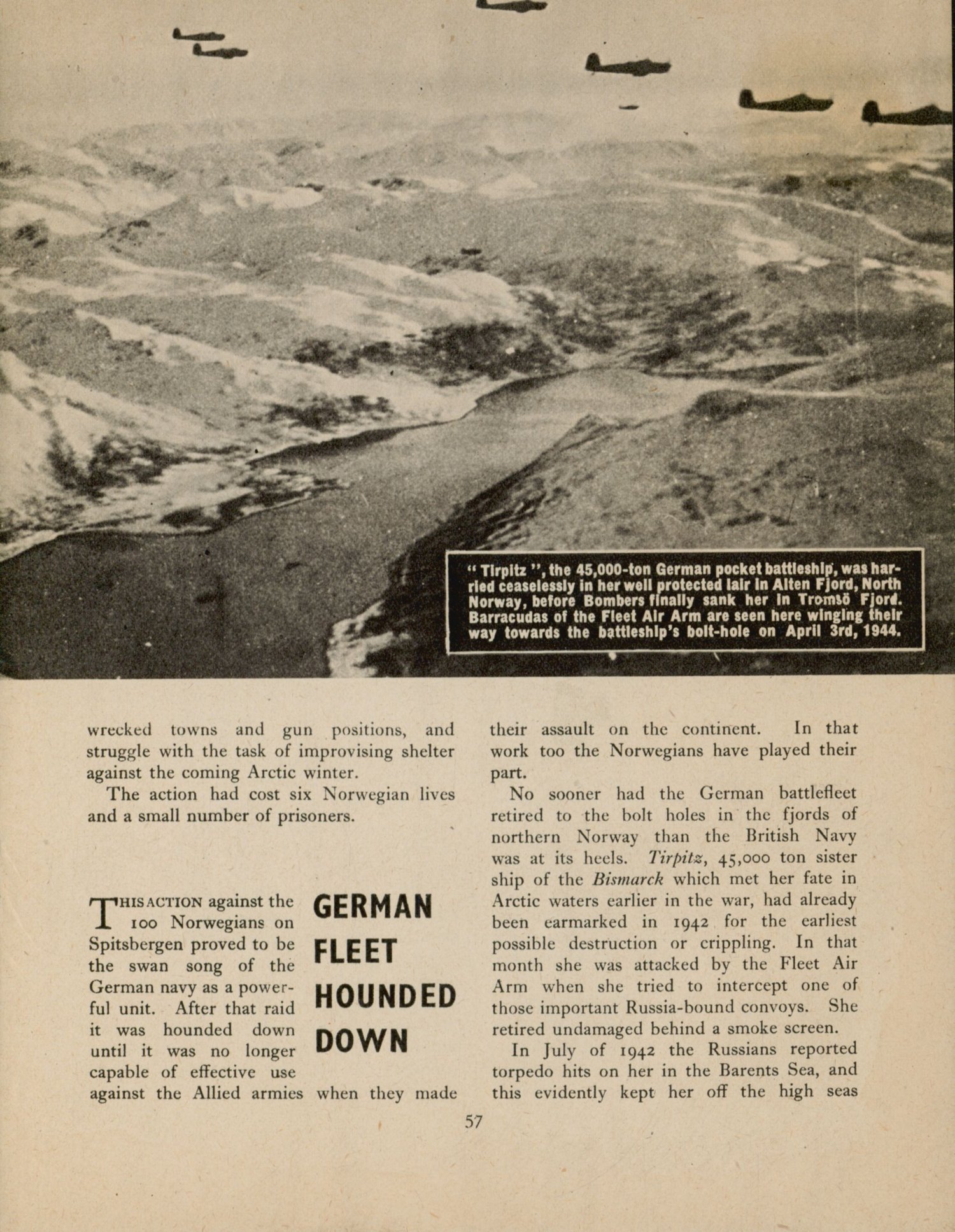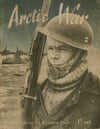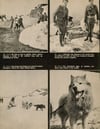Arctic War: Norway’s Role on the Northern Front
Arctic War: Norway’s Role on the Northern Front
Published by His Majesty’s Stationery Office on Behalf of the Royal Norwegian Government Information Office, London, 1945
On August 5th, 1940, 12 Norwegians whom fate had thrown together in a Salvation Army hostel in Iceland decided to form their own private “Army” in order to continue the fight against Nazism. They called themselves “Norwegian Company, Iceland,” and began collecting equipment suitable for ski-troops. Six weeks later, still unrecognized officially by either the British or Norwegian authorities, the force, which had by now increased to 18, hoisted the Norwegian flag in Iceland for the first time in the name of the Norwegian Army. So began the first phase of the free Norwegians’ participation In the war in the Arctic. It has taken them all over the Northern Hemisphere—Iceland, Greenland, Spitsbergen, Jan Mayen and back to Arctic Norway.
It was only after Norway was occupied by the Germans in 1940 that the Arctic came into the war news. And with it the names of such places as Iceland, Spitsbergen and Greenland.
First Iceland, that rugged island mantled with snow and ice, yet bubbling with springs of hot water. British troops were rushed there to guard vital sea-lines which would be imperiled by a German occupation of Iceland.
Then came the thrilling chase across the grey and stormy Arctic Ocean of the German battleship Bismarck, which culminated in her destruction. Spitsbergen, the Norwegian archipelago only 600 miles from the North Pole was evacuated and everything of use to the Germans was destroyed.
Thrilling convoy battles were fought across the length of the Arctic Sea with the Merchant Navy, the Royal Navy and the Air Force winning laurels under terrible conditions.
There was the news of the re-occupation of Spitsbergen by Norwegians, with its resultant clashes with the Germans; of the Norwegians’ heroic stand when the German battlefleet, including the Scharnhorst and Tirpitz, raided the islands. And it was in the Arctic Sea that the Scharnhorst was ultimately sunk, whilst Tirpitz was struck half a dozen times and more in her lair in the fjords of Arctic Norway before she was finally sunk in Tromso fjord on November 12th, 1944.
The salient points of these stories have been told. But the full “ inside ” story of the Arctic war has until now had to remain a closely guarded military secret. The islands, small continents and seas that stretch across the roof of the world have been more than just a battleground in which the enemy has been German.
It has been a battleground in which the elements have often been the chief antagonist. Men of the United Nations have experienced the full violence of nature in the north. The blizzards, the gales, the fogs, the terrible cold and, probably worst of them all, the isolation.
It has been because of these storms, because of the extreme weather up there, that these men — principally Norwegians, because of their knowledge of northern conditions — have had to be there at all. For the Arctic, where much of the weather that reaches Europe is born, is all-important for meteorology.
Over the thousands of miles of desolation from Spitsbergen in the east to Greenland in the west the Allies have established a chain of weather stations which is the key to many of the vital air, sea and land operations which take place on the Continent. On small groups of men living in tiny huts surrounded by snow and ice and mountain has often depended the lives of thousands of men.
These “met men,” as they are known, check the wind, the temperatures, the barometer, note all the vagaries of the weather, measure the intensity of the storms and assess the depths of the fogs. Their work is never done. Every three hours in the twenty-four, day in day out, month in month out, year in year out, they radio their reports to Britain. Every three hours — eight times a day!
From every possible point in the Arctic these reports reach the meteorological experts in Britain. They interpret them in terms of wind or calm, storm or sunshine, which might be expected either in London or Berlin.
Many of the lonely “weather men” are Norwegians. They are operating at Spitsbergen, Iceland, Greenland and at an island known until recently as “Island X” — Jan Mayen. It lies lonely and forbidding, in the center of the triangle formed by Spitsbergen, Greenland and Iceland.
For nearly four years Jan Mayen, which is no bigger than Malta, has been occupied by Norwegian troops and meteorological officers whose reports have filled in what otherwise would have been a serious gap in the “ met men’s ” chart in Britain.
It was to these men — to all the men who do meteorological work in the Arctic —- that the following tribute was paid by one of the chief meteorological directors at the Air Ministry: “ We owe a great deal to the Norwegians for the tremendous work they did in helping to build up the chain of Arctic meteorological stations. Theirs has been a most important contribution and we have not lost sight of the fact that Norwegians also were the pioneers of this work in Arctic spheres before the war. We who remain in Britain to interpret their reports have a heartfelt admiration for all the men who operate lonely and exposed observation stations far away from civilization. Their life is hard and arduous, but every one of them is deeply interested in his work and many are busily following other scientific channels.
“But it can certainly be said that on this handful of men a great deal depends and has depended in the past.”
Jan Mayen and Iceland comprise two of the main keys in forecasting Britain’s weather, as they are both almost continually within the low pressure circle thus enabling observations to be taken that have particular bearing on the winds and fogs and clouds which sweep southwards. And of the two places Jan Mayen is probably the most important, because, being farther north, observations of weather going south can be reported in advance of the stations at Iceland.
Contents
- The Importance of the Arctic
- Polar “Weather” Stations
- 12 Men Prepare for Invasion
- Daily Life
- Training 10,000 Ski-Troops
- Wings Over the Arctic
- Commandos in Spitsbergen
- Reconquering Norwegian Soil
- The Germans Attack
- German Fleet Hounded Down
- The Liberation has Begun!
68 pages
58 photos/illustrations


